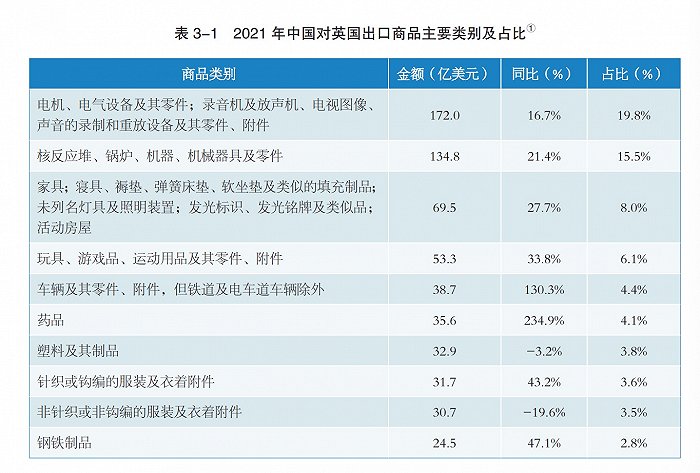The UK announces a "carbon tariff" from 2027
Since the European Union, the UK has become the second economy in the world to announce a "carbon tariff".
On December 18, local time, the British government officially announced that it will implement the UK Carbon Border Adjustment Mechanism (CBAM) from 2027. The initial product categories include aluminum, cement, ceramics, fertilizers, glass, hydrogen, and steel.
In May this year, the European Parliament and the Council of the European Union adopted theOn the establishment of the Carbon Border Adjustment Mechanism2023/956No, which established the CBAM mechanism in the form of law.
The CBAM mechanism refers to the setting of a carbon price for some high-emission products in an economic region, and if the carbon price paid by the imported product in the country of origin is lower than the carbon price paid by similar products in the economic region, the importer needs to pay a certain fee for the difference. As a result, the CBAM mechanism is also commonly known as the "carbon tariff".
According to the UK Government Statement, the specific list of products to be covered under the above product categories, as well as other design and delivery details, will be determined through a public consultation in 2024.

According to the China Council for the Promotion of International Trade report, the main commodity category of China's exports to the UK in 2021 was mechanical and electrical equipment, followed by nuclear reactors, boilers, mechanical appliances and parts and furniture. In 2021, China's trade in steel products exports to the UK was US$2.45 billion, accounting for 2.8% of China's total exports to the UK. China's exports to the UK of cement, ceramics, fertilizers, glass, hydrogen and other products account for a relatively small amount.
According to the research report of Huatai Futures, in 2020, China exported a total of 519,000 tons of aluminum to the United Kingdom and the European Union, accounting for 11.2% of the total aluminum exports.

In March-June this year, the UK launched a public consultation on whether to implement the mechanism. Following consultation, the UK government issued a formal statement of decision yesterday.
Similar to the EU's claims, the UK government claims that the CBAM was launched to prevent carbon leakage, which means that due to the UK's local carbon price on high-emitting industries, local British producers move production to other parts of the country, and the corresponding carbon emissions are also transferred.
But this claim is not widely accepted. A few days ago, Wang Mou, secretary-general of the Sustainable Development Research Center of the Chinese Academy of Social SciencesIt was said in the live broadcast of interface newsCarbon leakage is still a controversial concept from an empirical perspective.
According to the British government statement and the British "Guardian" report, the UK's move is a supporting measure to protect the competitiveness of local manufacturers after the UK has exerted greater pressure on local high-emitting industries to reduce emissions and charge carbon emission costs.
The Guardian reports that the Chancellor of the ExchequerJeremy Hunt said"This levy scheme will ensure that carbon-intensive products (such as steel and ceramics) from overseas face a carbon price comparable to those produced locally in the UK... This should give UK industry the confidence to invest in decarbonisation. ”
According to The Guardian, the United KingdomIndustry insiders welcomed the plan, but argued that the launch date of 2027 was still too late compared to the EU.
In an interview with the Financial Times in November, Gareth Stace, director general of the UK's steel trading agency, said: "The EU is implementing its own CBAM, and if we don't quickly develop and implement our own measures, the UK will face a damaging trade barrier in front of its largest trading partner." ”
As a result of Brexit, the EU CBAM regime also applies to the UK. According to EU law, the scope of the EU carbon tax includes cement, steel, aluminum, fertilizer, electricity, and hydrogen. From October 1 this year to the end of 2025, there will be a transition period for the EU CBAM mechanism. As of January 1, 2016, there will be actual carbon tax payments involved.
In September this year, the spokesperson of the Ministry of Commerce of ChinaHe YadongIn response to the EU CBAM mechanism,Relevant policies should be consistent with the basic principles and rules of the WTO, and avoid constituting protectionist measures and green trade barriers.
According to the UK government, the UK CBAM mechanism applies to Scope 1 and Scope 2 emissions from imported products, as well as the embodied carbon emissions of some products in upstream links such as raw materials and processing. But unlike the EU CBAM scheme, the UK CBAM scheme does not involve the purchase and trading of emission certificates.
Scope 1 emissions refer to the greenhouse gases directly emitted by enterprises through vehicles, boilers, captive power plants, etc., and Scope 2 refers to the carbon emissions indirectly generated by enterprises, including carbon emissions from purchased electricity and heat.







